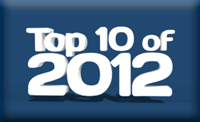Remote Scribes Put The ROI In EHRs

By Ken Congdon, editor in chief, Health IT Outcomes
Ask any hospital CIO or practice manager in the U.S. what the number one barrier to EHR adoption and implementation is in their facilities, and most will unwaveringly reply — “physician resistance to the technology.”
Despite the financial and data exchange benefits EHRs promise, most doctors despise the technology for one simple reason — it slows them down. EHRs require a significant amount of electronic data entry, and in most cases, this burden falls squarely on the physician because they are the ones responsible for evaluating each patient, ordering tests, making appropriate diagnoses, writing prescriptions, and determining follow-up treatment. The negative impact the EHR data entry process has on physician workflow has been well documented. For example, productivity drops between 25% and 40% are not unusual and typically last 6 months or more. These drops can be even more profound if a physician lacks basic keyboarding skills. When doctors are less productive, fewer patients are examined, and practice revenue takes a hit as a result. Furthermore, the mere act of electronic data entry at the point of patient care impairs the doctor/patient interaction.
So, in this age of federally mandated EHR adoption, what are healthcare providers to do? Many have accepted the EHR as a “necessary evil” and are taking the productivity losses in stride as a cost of implementing the technology. Others have abandoned EHR use and returned to dictating or handwritten notes. Some older physicians have even opted for early retirement rather than continuing to practice medicine in an industry where EHRs are the new norm. However, a select few providers have found ways to overcome the productivity hurdles generally introduced by EHRs. These pioneers are leveraging the technology in ways that are actually making them more efficient, while — believe it or not — generating an ROI for their practices.
ENT Specialists of Northwestern Pennsylvania has been an innovator in this regard. This eight-physician ear, nose, and throat practice located in Erie, PA has developed a system where scribes, located in a dedicated office space remotely situated from the exam rooms, perform all EHR data entry under the direct supervision of the doctors. This virtual connection is made possible via a combination of wireless telephone headsets and high-definition display monitors located in each exam room. By removing the data entry burden from physicians, ENT Specialists has actually been able to increase patient volumes 3.6% and revenue 32% through use of EHR technology. Access This Content To Read This Article In Its Entirety.
Get unlimited access to:
Enter your credentials below to log in. Not yet a member of Health IT Outcomes? Subscribe today.
